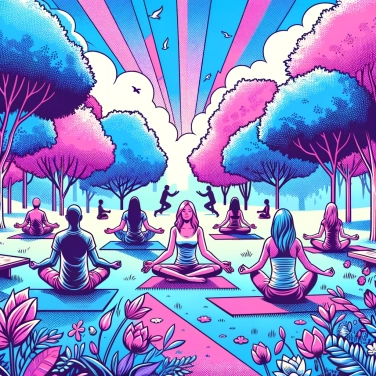When we cry, our eyes turn red because tears cause the blood vessels around the eyes to dilate, increasing blood flow and giving this reddish coloration.

When we cry, the blood vessels in our eyes tend to dilate. In other words, they widen and allow more blood to flow. This phenomenon occurs because crying often involves significant activity in the face, leading to increased blood flow to the eyes and eyelids. As a result, this increase in blood at the surface of the eyes gives that characteristic red and swollen appearance after tears. It is these small dilated vessels that make your eyes so red and tired after a good cry.
When you cry for a long time, your eyes eventually become irritated. Tears naturally contain different chemical substances, some of which trigger a slight inflammation at the surface of the eye and eyelids. As a result, tissues swell a bit, heat up slightly, and quickly become red. The eye then takes on that typical reddened and tired appearance after a good crying session. It’s simply your body reacting to the many compounds present in your tears to protect and quickly repair the irritated surface.
When you cry from emotion, the tears contain higher levels of certain chemicals like prolactin, stress hormones, and proteins. Although these small compounds are natural, they can cause irritation in the eye, leading to discomfort and that familiar red coloring. This particular emotional cocktail makes the eyes more sensitive, which makes inflammation easier and enhances their reddened appearance.
When we cry, we often tend to rub or dab our eyes with a tissue or even with our fingers. This gesture, although harmless, slightly irritates the surface of the eye and the eyelids. This mechanical effect causes additional irritation, as the skin around the eyes is particularly thin and sensitive. It activates local blood circulation and then makes the eyes even redder and more swollen. The more we persist, the redder the eyes become.
When you experience intense stress or strong emotion, your body reacts immediately: your heart rate increases, and your blood vessels dilate, particularly around the eyes. This dilation allows for increased blood flow to the ocular region in response to the stress shock. As a result, your eyes become red and slightly swollen, giving that appearance of fatigue or irritation after a big crying spell. This phenomenon is therefore not solely related to the tears themselves, but rather to the emotional upheaval that accompanies them and directly affects the circulation around the eyes.
Did you know? Red and puffy eyes after crying can be reduced by briefly applying a cold compress or cold tea bags to your eyelids, thereby decreasing the inflammation of the blood vessels.
Did you know? Humans are the only animals that shed emotional tears; other mammals produce tears solely to protect and maintain their eyes.
Did you know? Blinking regularly is essential to keep the eye surface moist and to remove irritating substances. During times of intense emotions, we may blink less frequently, which increases the sensation of dryness and redness.
Did you know? When we cry, rubbing our eyes can significantly increase irritation and redness due to direct mechanical rubbing and increased blood flow to the surface of the eye.
Yes, emotional tears generally contain more proteins, hormones, and stress-related chemicals. These components may partially contribute to eye irritation and redness after crying.
To quickly reduce redness after crying, you can apply a cold compress or a cooled tea bag to your eyelids, which will help constrict blood vessels and lessen inflammation. Also, avoid rubbing your eyes to prevent worsening the irritation.
Sometimes, the burning sensation can arise from friction caused by rubbing the eyes, from an abundant production of emotional tears containing irritating chemical substances, or from a slight temporary inflammation caused by the natural reaction of the eye tissues to the sudden influx of tears.
In general, having red eyes after crying is not dangerous; it is simply a normal reaction of your eye caused by the dilation of blood vessels and slight inflammation due to tears. However, if this redness persists for a long time, is accompanied by pain, or other unusual signs, it is best to consult a healthcare professional.
Sure! Here’s the translation: "Yes, to reduce puffiness around the eyes, you can adopt a few simple tips such as sleeping with your head slightly elevated, using a cold compress or cold tea bags on your eyelids, and staying adequately hydrated. Avoid rubbing or aggressively tapping your eyes as much as possible."

0% of respondents passed this quiz completely!
Question 1/5